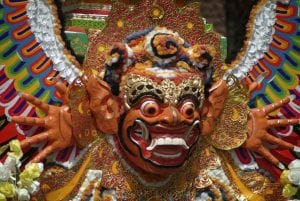Hindu Beliefs on Dying and Death

Hindu death practices follow a similar overarching pattern with some variation by family tradition, caste, or sect. The family is the most important part of a sacred funeral rite. Even the children participate in the rites and rituals; they are not protected from death but taught to understand it.
A Hindu priest typically performs certain death rites, but the family may act as a substitute if a priest is unavailable. The following is a general outline of Hindu practices for dying and death leading up to cremation:
Approaching Death
It is traditional for those of the Hindu faith to die in their homes. With today’s hospitals, however, it is increasingly common for people to be kept away from home. Hindus will often bring the terminally ill home to die peacefully among their family and loved ones. Family and friends will keep a vigil until the moment of passing by, singing, praying, and reading scriptures. If there is no alternative, this practice is still carried out in the hospital.
The Moment of Passing
The mantra is chanted holy ash is placed on the forehead, and holy water or milk is dripped into the mouth. The body is prepared for a return to Mother Earth’s lap, but according to Hindu custom, it is never embalmed, and the organs are never removed for donation. Relatives stand near the body to say their goodbyes and sing sacred songs.
The Ritual of Fire (Homa)
It is a Hindu custom for the family to build a shelter and perform a fire ritual (homa) in order to bless nine brass pots and one clay pot. In the absence of a shelter, a fire is made at home. The rite is then led by someone called the chief mourner. Generally, this person is the oldest son in the case of a father’s passing or the youngest son in the case of a mother’s passing.
Cremation
If the family cannot bring the deceased’s body home, the family will make arrangements to prepare it themselves at the mortuary. They do not want to leave these sacred rites in the hands of strangers. Only men attend at the site of cremation, and the chief mourner leads them. The body will be carried counterclockwise around the pyre and then be placed on the pyre. At gas crematoriums, the body is carried around the chamber. A small fire will be lit inside the coffin before it is completely engulfed in the fire.